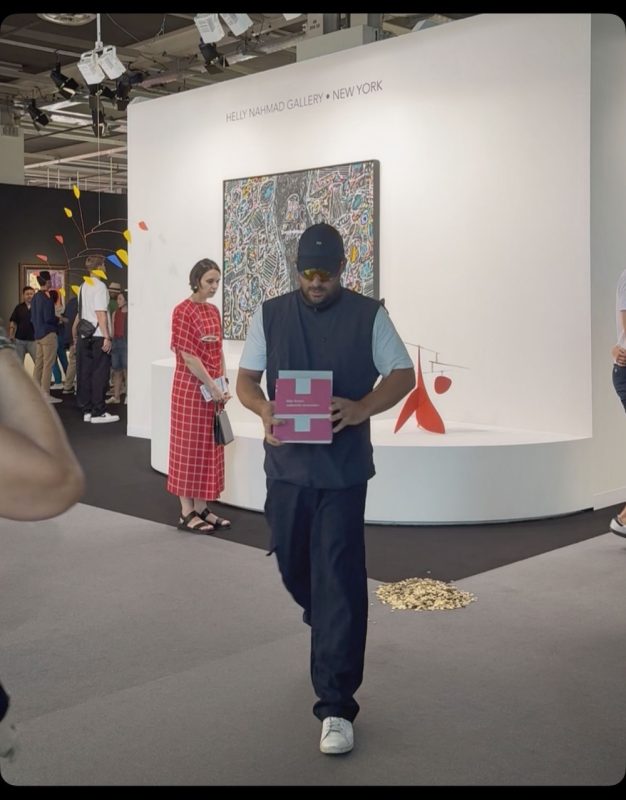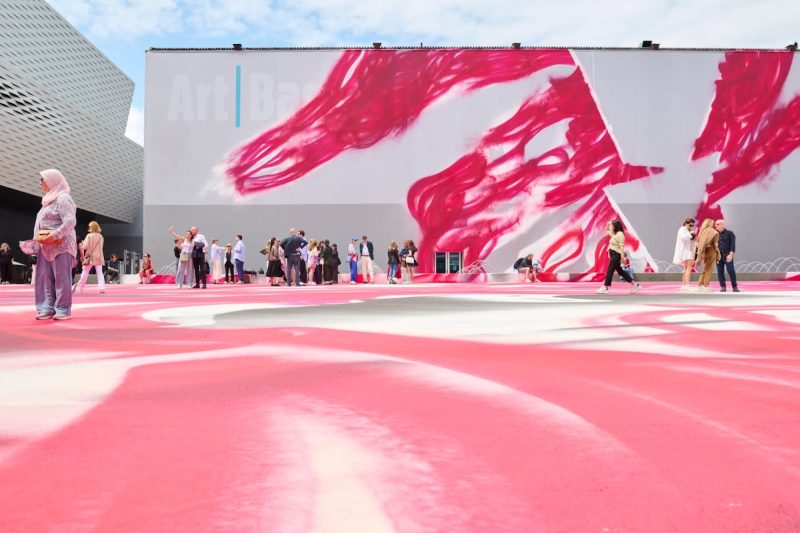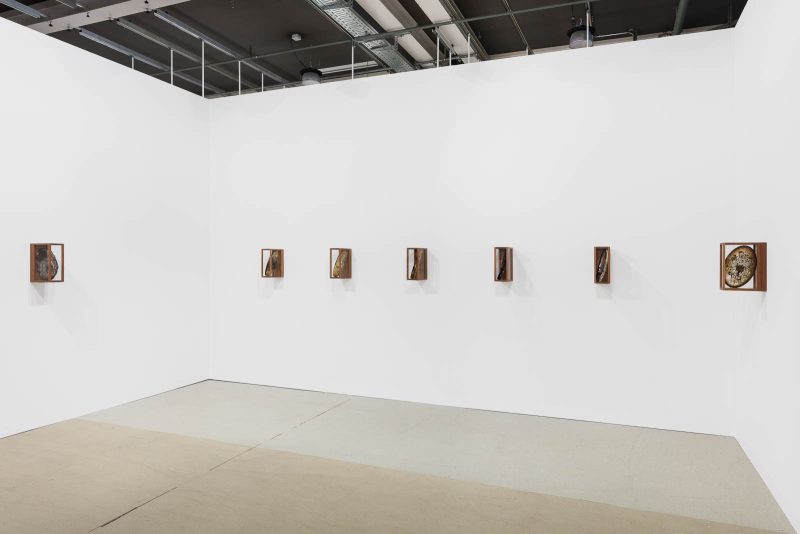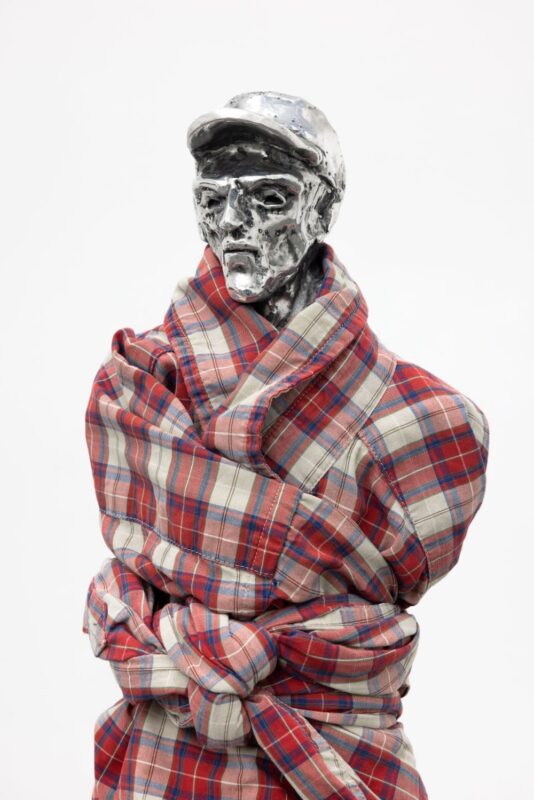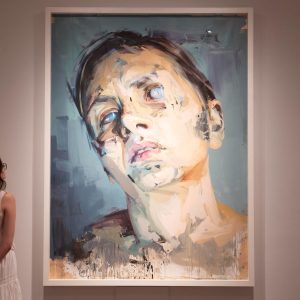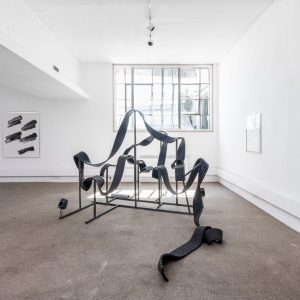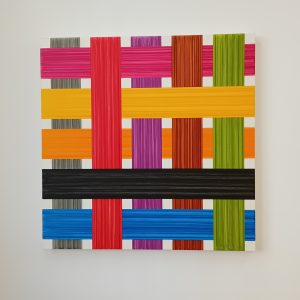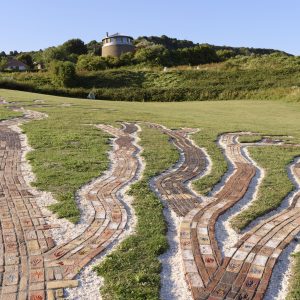Art Basel | Basel is double B big. Since its inception in 1970, the corporation’s ‘marquee’ fair has sprawled across the cute Swiss city, establishing a region-wide Art Week by proxy. Within the Messeplatz main building, Art Basel | Basel 2025 features 289 ‘leading galleries’ — those vetted and willing (ballsy enough) to pay the sky-high booth fee. Again, Art Basel | Basel is BIG; I always go prepared with an annotated map showing (a) the galleries I want to visit and (b) the best route between them. Some will say that this shuts down any chance of a momentary encounter, seeing something mind-blowing or new. On the contrary, I retort, the sheer amount of stuff in Art Basel | Basel shuts down any chance of a momentary encounter, and often what appears mind-blowing is the best of a bad bunch. I have already written two listicles this week. The form is jarring to me now. Rather than trying to distil the mass of Basel | Basel down into a ‘best of’ sound bite, I want to recall my journey through the fair in writing, speaking about some of the stuff I saw.

Hall 2.1: upstairs, that is. In true anal fashion I am moving clockwise around the more contemporary section of the fair, going J to K to L to M (love M = the Statements section, full of good friends), M to N to P to R to S. I will stop for lunch at some point, or at least a fag or two.
J13: Maureen Paley
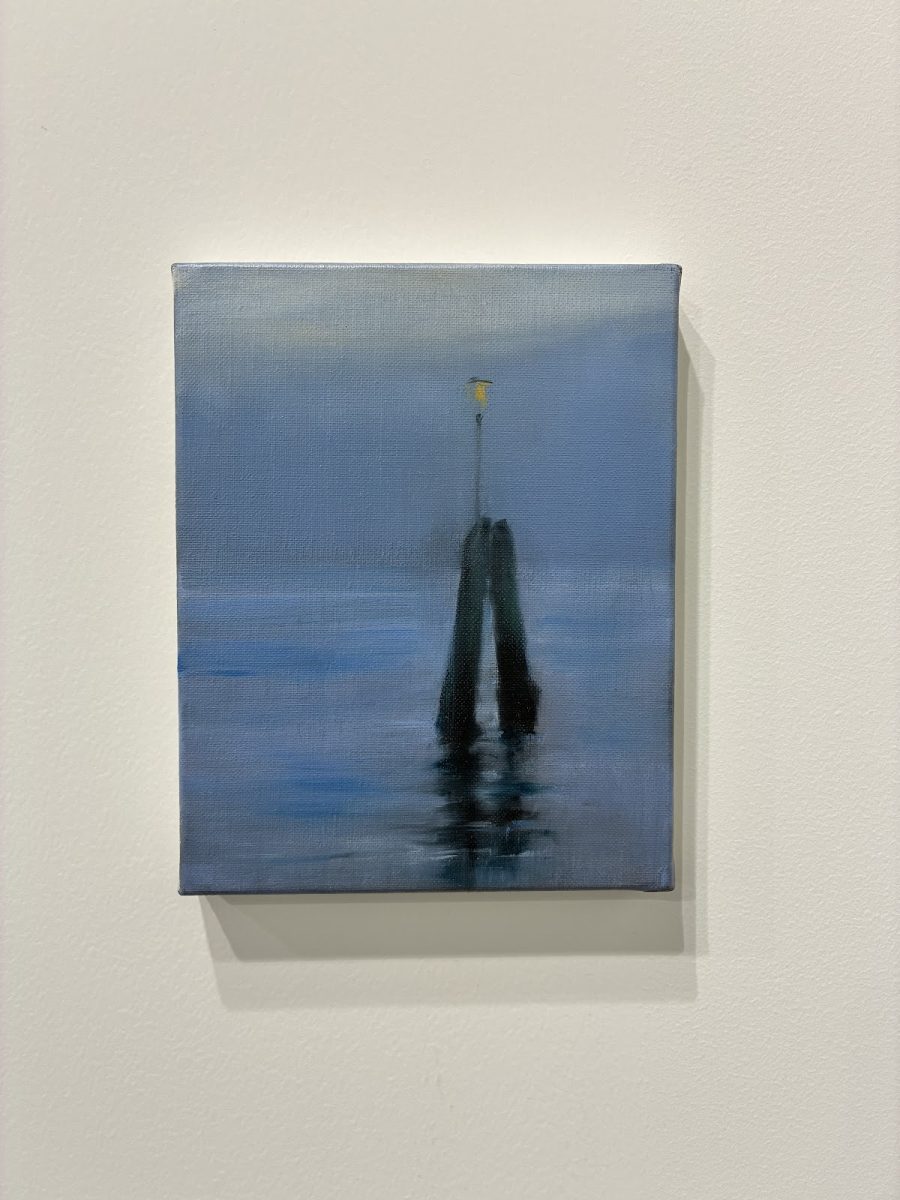
It’s a nicely hung booth. Everything has room. Maureen’s at the desk, hair up as per. Somewhat hidden behind the viewing-room-cabinet, I spot a super cute little Paul P. painting, Untitled (2010). An oil on canvas, 18 flat-head pins hold the dreamy seascape and beacon to its stretcher. These formalities call out to me.
J4: carlier gebauer

A gallery not on my list, Ian Waelder’s Figure in Jacket (Breeze) (2025), drew me in. Visually silky, the almost square canvas pictures something of a figure lost in sepia-tone mist — a layer of raw linen is wrapped around the painted composition, marring our view wonderously. There is some newsprint stuck on this wrap, an allusion, perhaps, to the mysterious events that lie behind Waelder’s fabric fog.
K24: Casey Kaplan
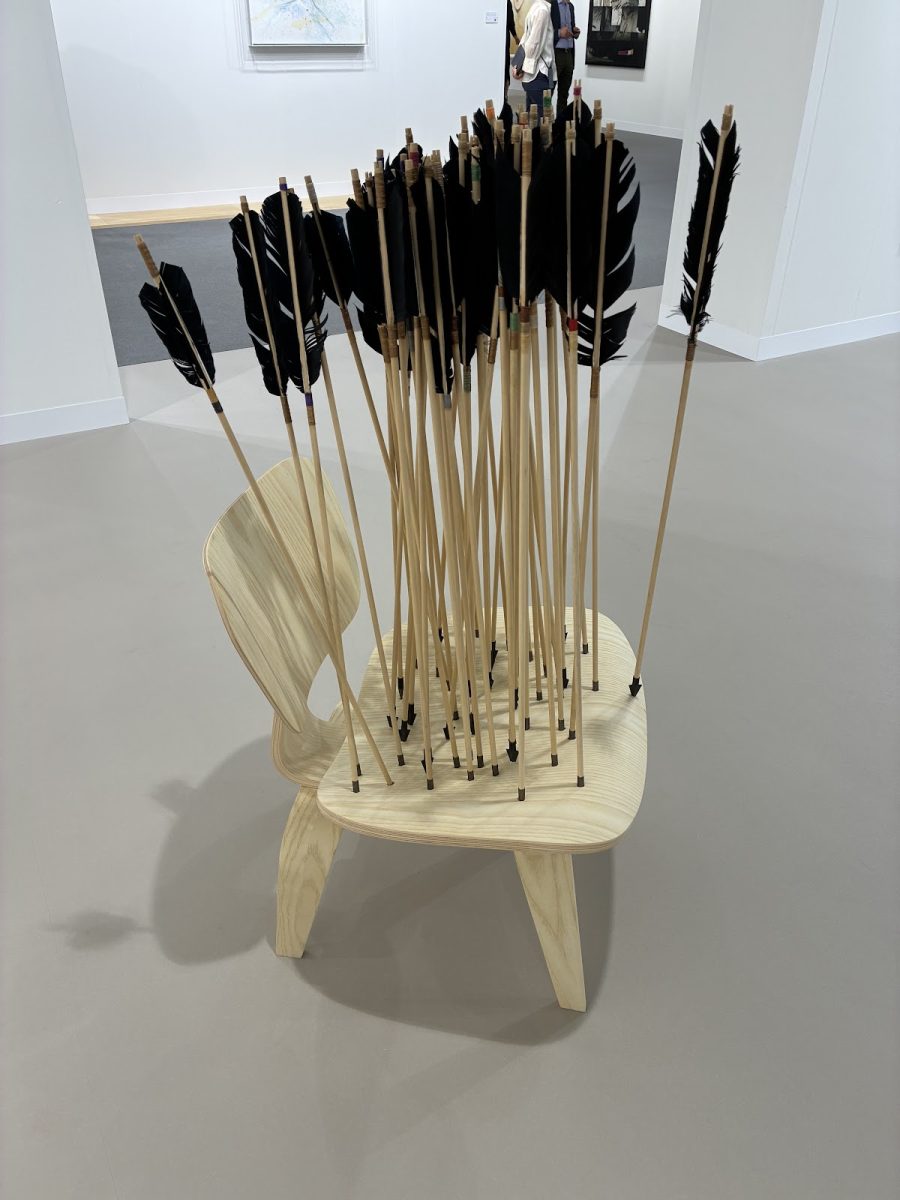
Again, not on the list … but who could not be attracted to Brian Jungen’s sculpture Splint Sit Splinter (2024). ‘Simply’ a plywood Eames chair impaled by a shed load of crow feathered (?) arrows, the work makes me think about the story of Saint Sebastian — a martyr and figure of queer iconography.
K12: Catriona Jefferies
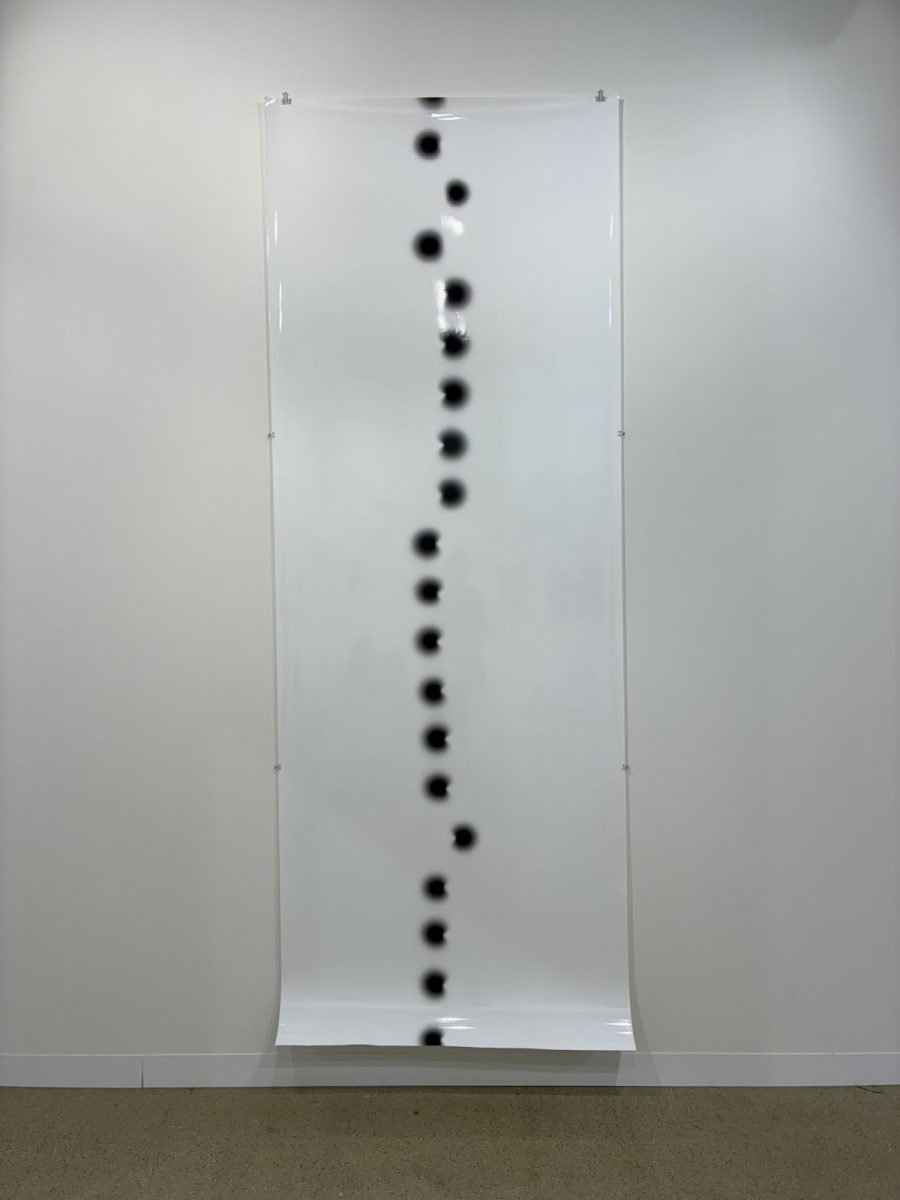
Another gallery not on the original list, and as with Jungen, another Canadian artist, and as with Jungen’s, another artwork that oozes with Saint Sebastian vibes — this time more overtly. Abbas Akhavan’s Saint Sebastian (2025) feels vulnerable: honest. I have a love afair with this artwork. A linear cascade of bleedy black dots, the work is the photographic trace of Félix González-Torres’ Untitled (Last Light) (1993) — one of the artist’s fairy light strings. That work is my screensaver. With these two queer references in mind (St. S. and FGT) Akhavan’s work not only pays homage to hero’s of queer existence but speaks about how their legacies continue to inspire today: both are lights in the dark.
K11: Herald St
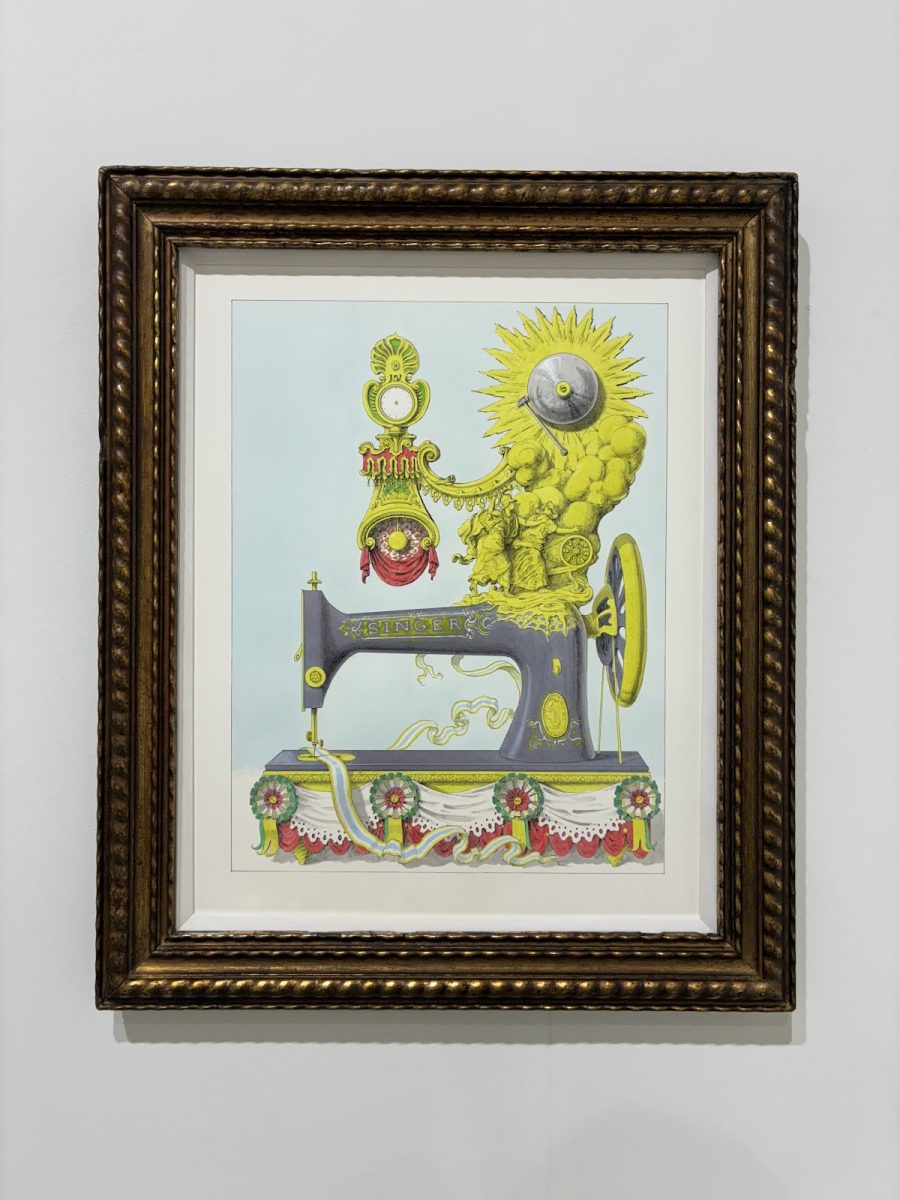
Pablo Bronstein is back. A timeless drawing Clock design with the Legend of Arachne (2025) is housed in one of the artist’s antique frames (Bronstein is a well-known collector of old stuff). Over the last few years I have seen a number of poor figurative drawings by Bronstein. Returning to something of his roots — or at least to his passions — this depiction of a Singer sewing machine with allegorical crown deserves its four frilly rosettes. (Will there be editioned prints any time soon? I wonder, I hope.)
L8: Standard (Oslo)
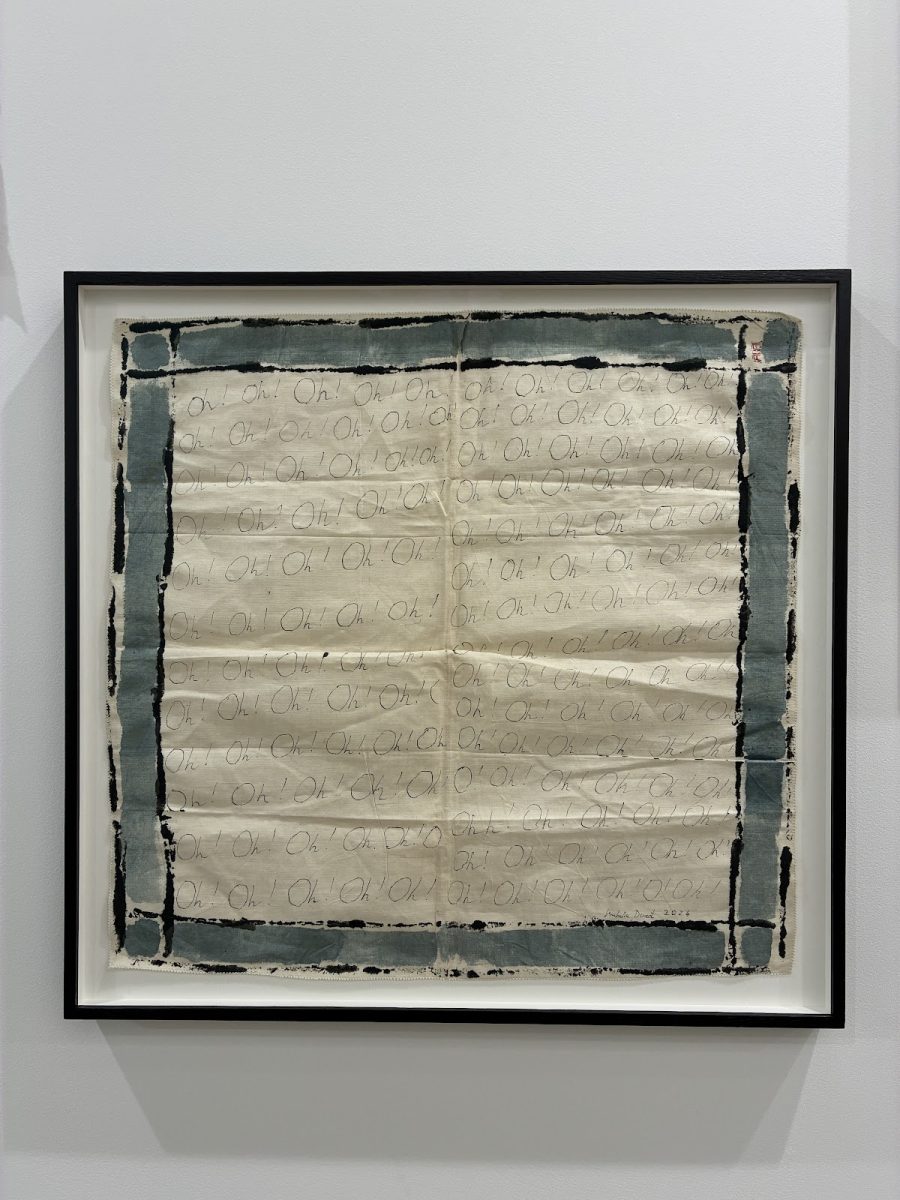
Isabella Ducrot. Sometimes I just like a little fun. Oh! Oh! Oh! and French grey.
(Sorry, I didn’t catch the title nor date.)
L7: 47 Canal
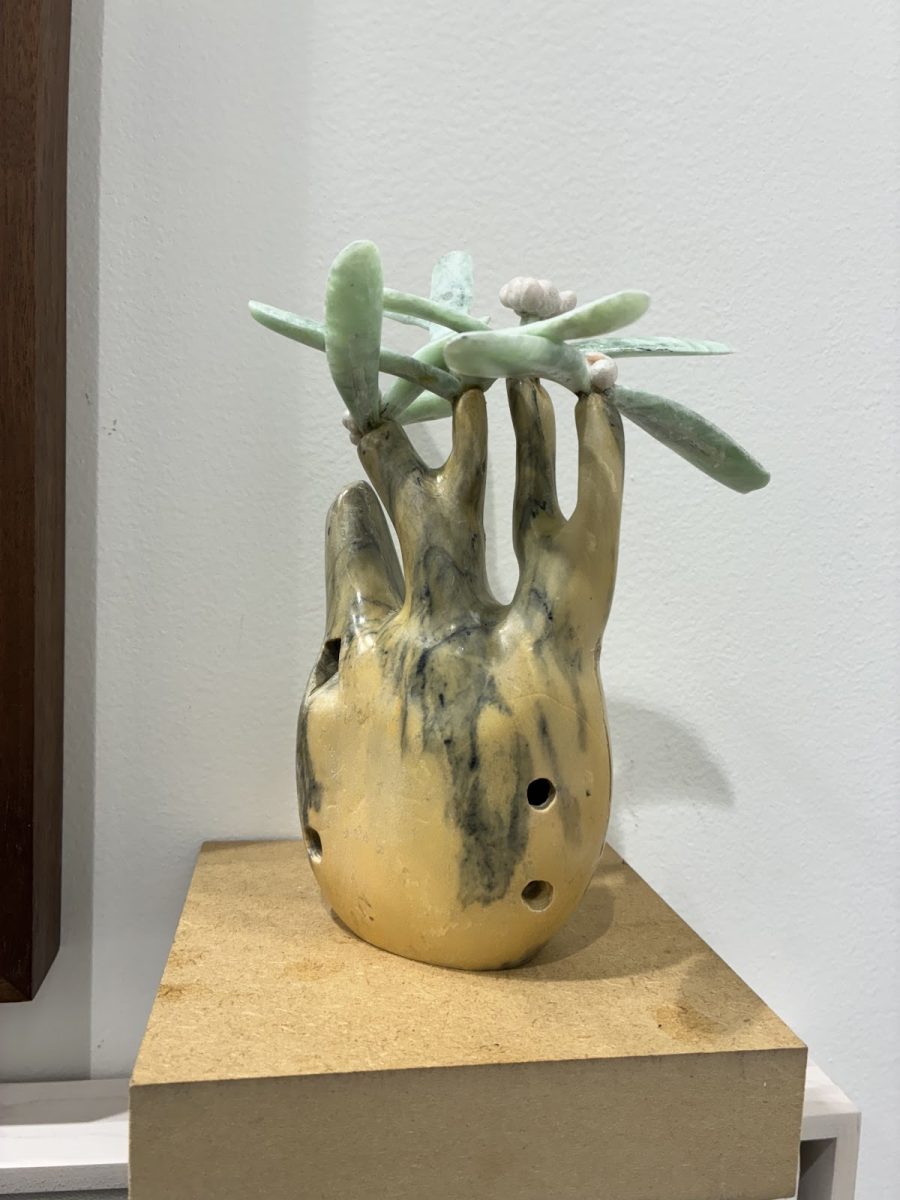
I want to kiss Wang Xu’s sculpture stone ocarina #1, large grooves (2022). Made of soapstone, I am told not to. I was also told that the work can be used as a musical instrument. Sometimes I just dream of the promise of love music.
L15: Hollybush Gardens
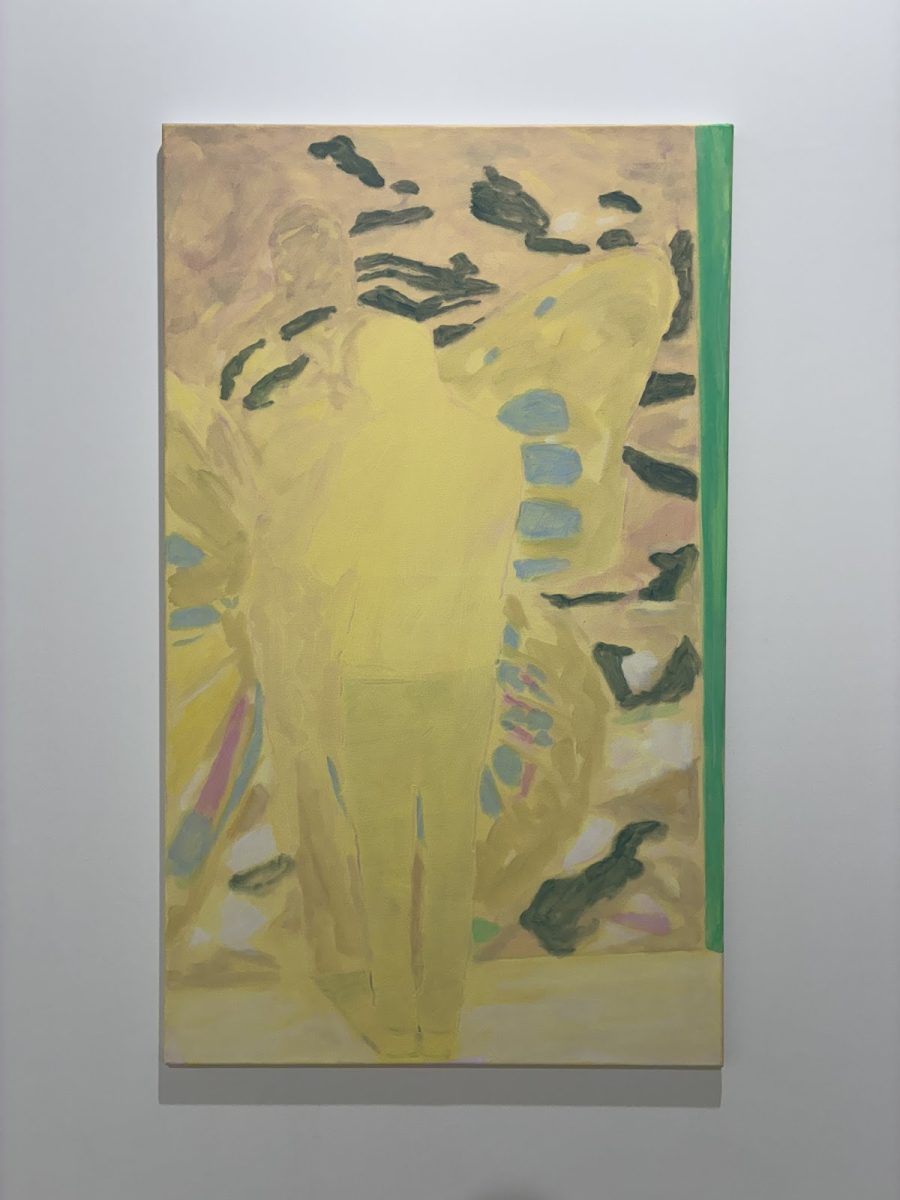
Another dreamy image. Bruno Pacheco’s Dream Man (2024) depicts the back of a male-looking figure as they face a wall, their shadow lingering all spectral across this. Rendered in pastel tones, mostly baby yellow, with dots of blue and green, I see butterfly wings in this composition. Indeed, it is a painting that beckons with a sense of transformation and the possibilities of flight through fantasy.
L23: Thomas Dane
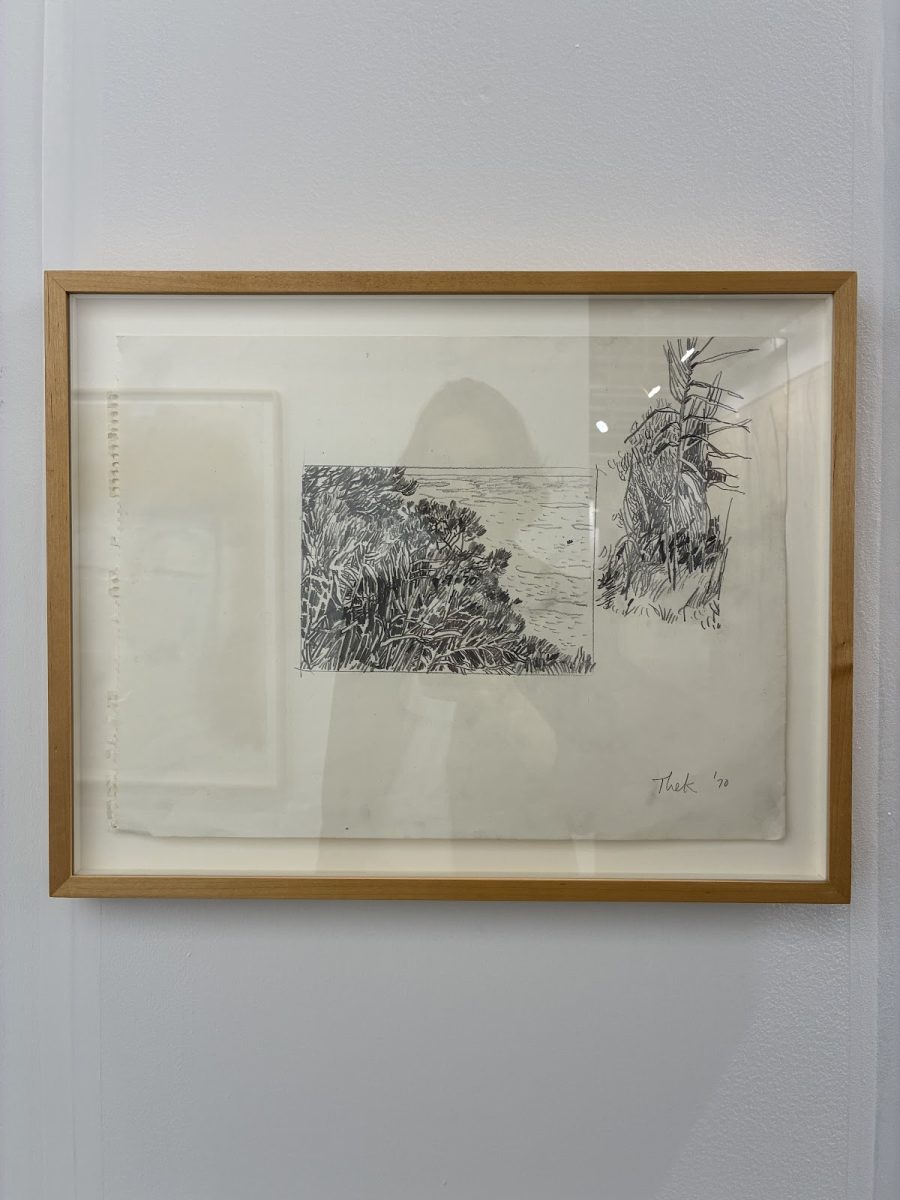
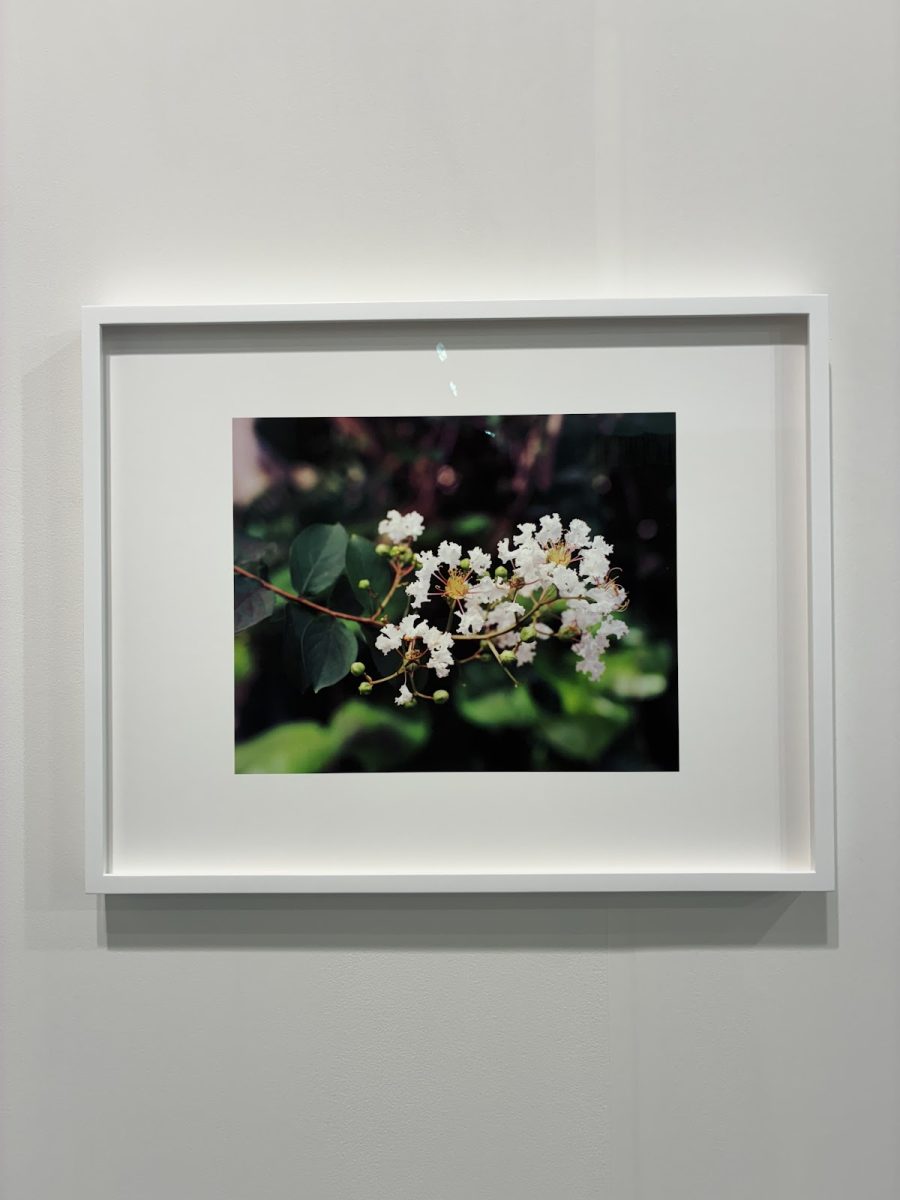
Paul Thek <3 Steve McQueen <3. Very different mediums, very different practices, both touching depictions of the natural world.
L20: Martin Janda
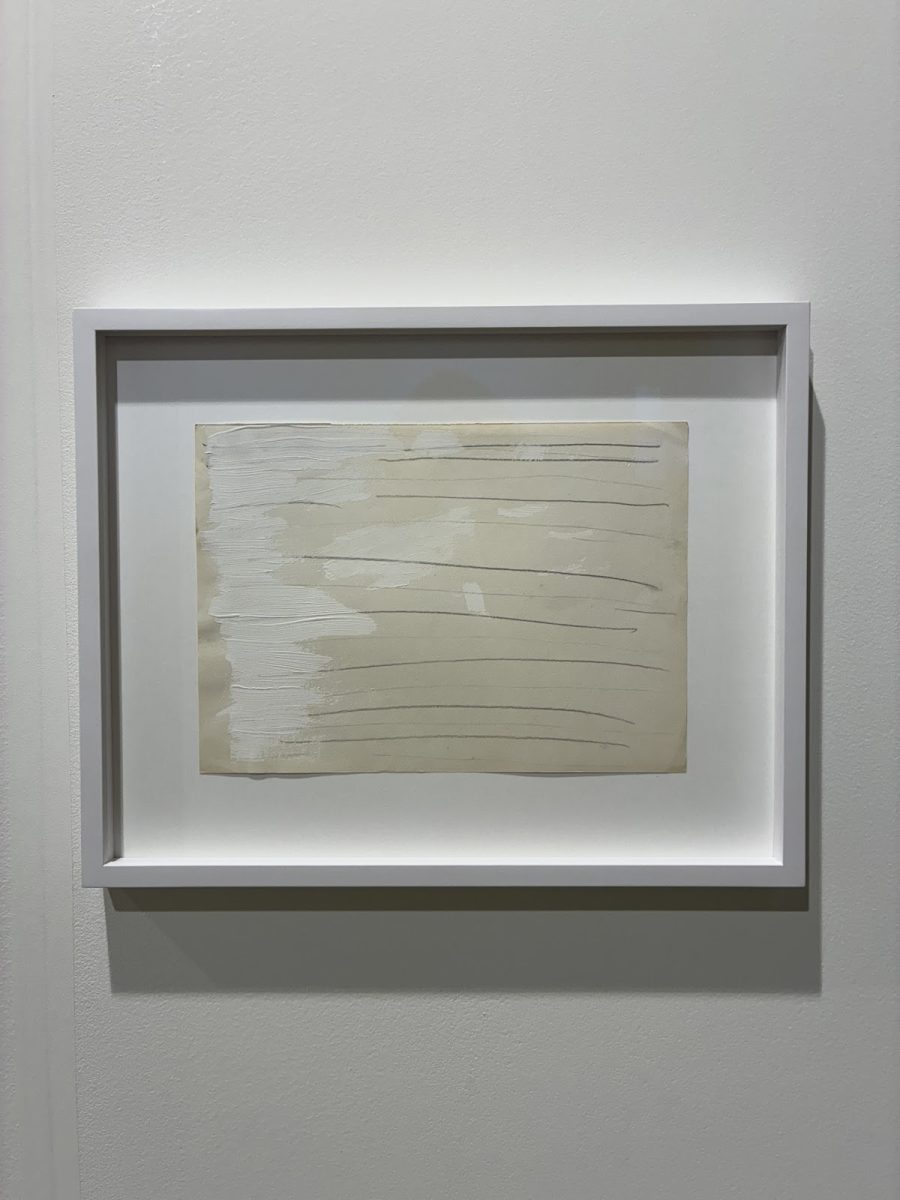
Have you ever imagined what the feel of the wind could look like? I hadn’t until I saw Mladen Stilinovi?’s Olovka + bijela (Pencil + White) (1975) [sic]. I mean, in its sketchy almost nothingness, the work expresses both that immediate hit of a mountain top gust and the chilling trail that follows.
M7: Proyectos Ultravioleta

I want to sit down in Abbas Zahedi’s Statements booth. A collection of newly made sound sculptures, the works, the space, feels generous. Some of these sculptures whisper elegiacally, others are ‘playable’. In this way, the installation is both a place to dwell and to act. It’s of note that each of Zahedi’s artworks has been made from repurposed metal piping, a formality that asks us to rethink our relationship to the material degradation of the world. (There’s a lot of concept here. I would invite you to engage with Zahedi’s contributions to Tate Modern’s exhibition Gathering Ground.)
M17: Eli Kerr
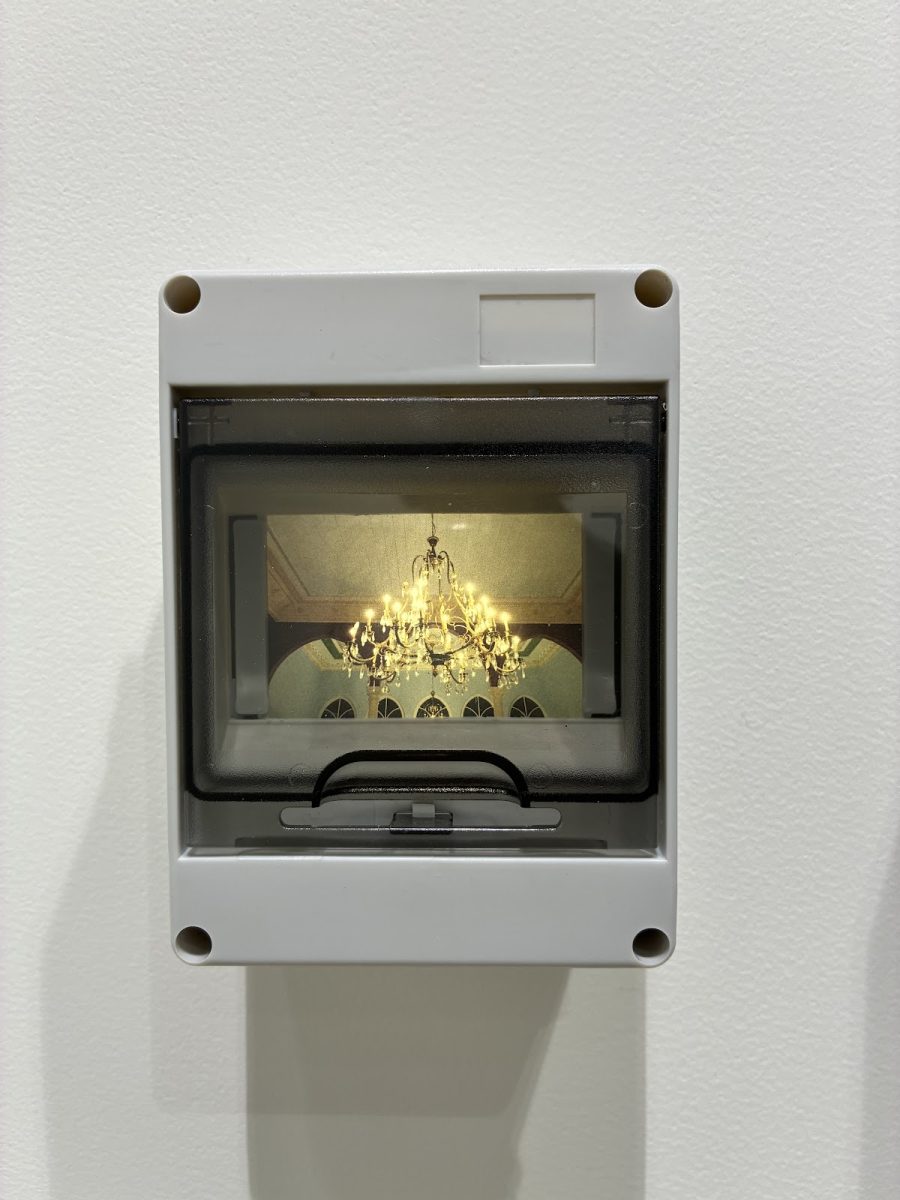
I have always had a thing about images of old-school chandeliers. A single detail/component of Joyce Joumaa’s installation Periodic Sights (2025), a somewhat ghostly image of a neo-classic chandelier drew me into Eli Kerr’s booth. As well as being beautifully arranged, each of the small light boxes that compose this installation directly points to the social realities of living in Lebanon — in recent year’s the country’s economic precarity has left its citizens living with continual periods of blackout. (Again, I would encourage you to read the text Rayya Badran has written to accompany this presentation.)
N9: Antenna Space
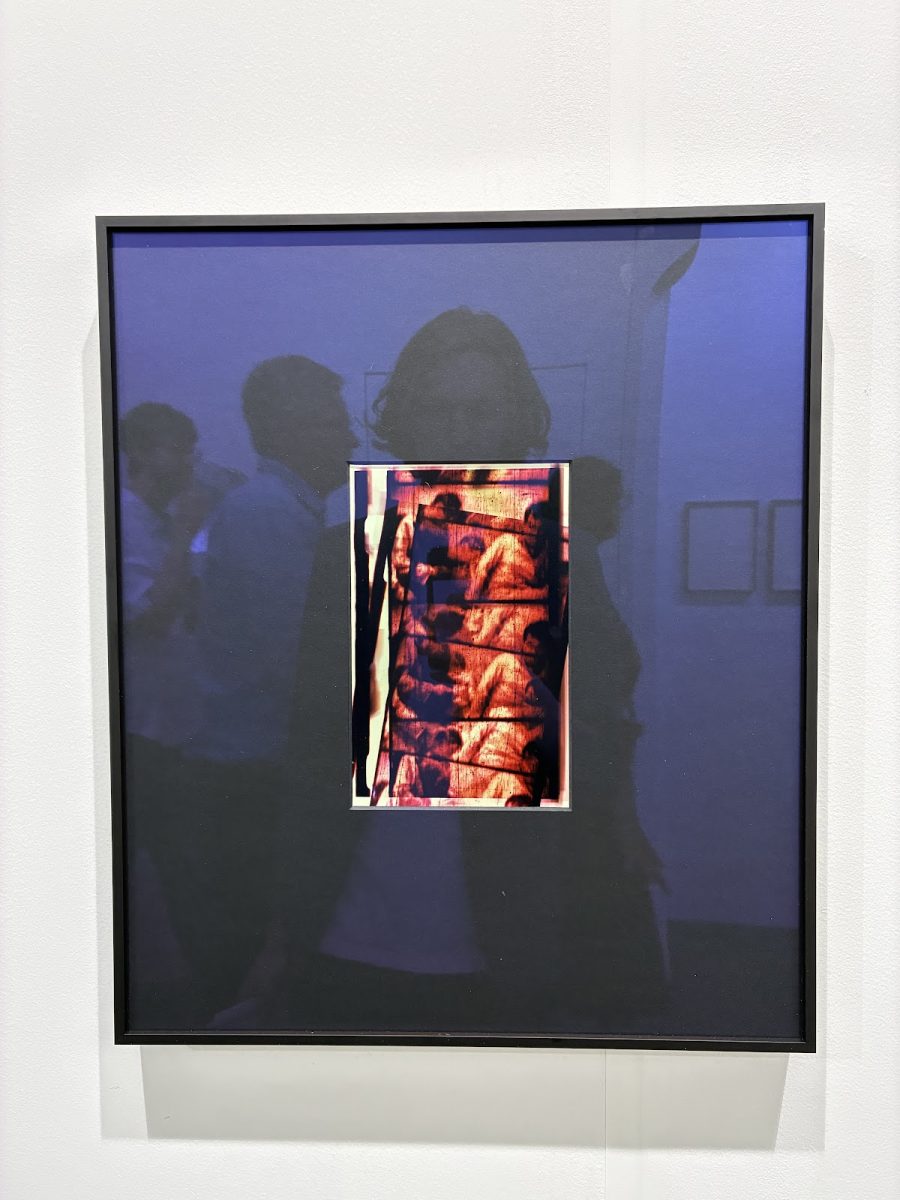
Peng Zuqiang’s Nameless Island in three folds (2025) is filmmaking otherwise. A leeky-looking print of filmic negatives enveloped in a midnight blue surround, the artwork looks like an eclipse, a moment of in-illumination. The image we see falling off centre in the work comes from a particular film stock proliferated during the Maoist era in China. In this way, Zuqiang’s image makes me think about how narratives are captured, contained, stored, and indeed proliferated — how politics infuses this process. I am left wondering what lies behind the folds.
P9: Sweetwater
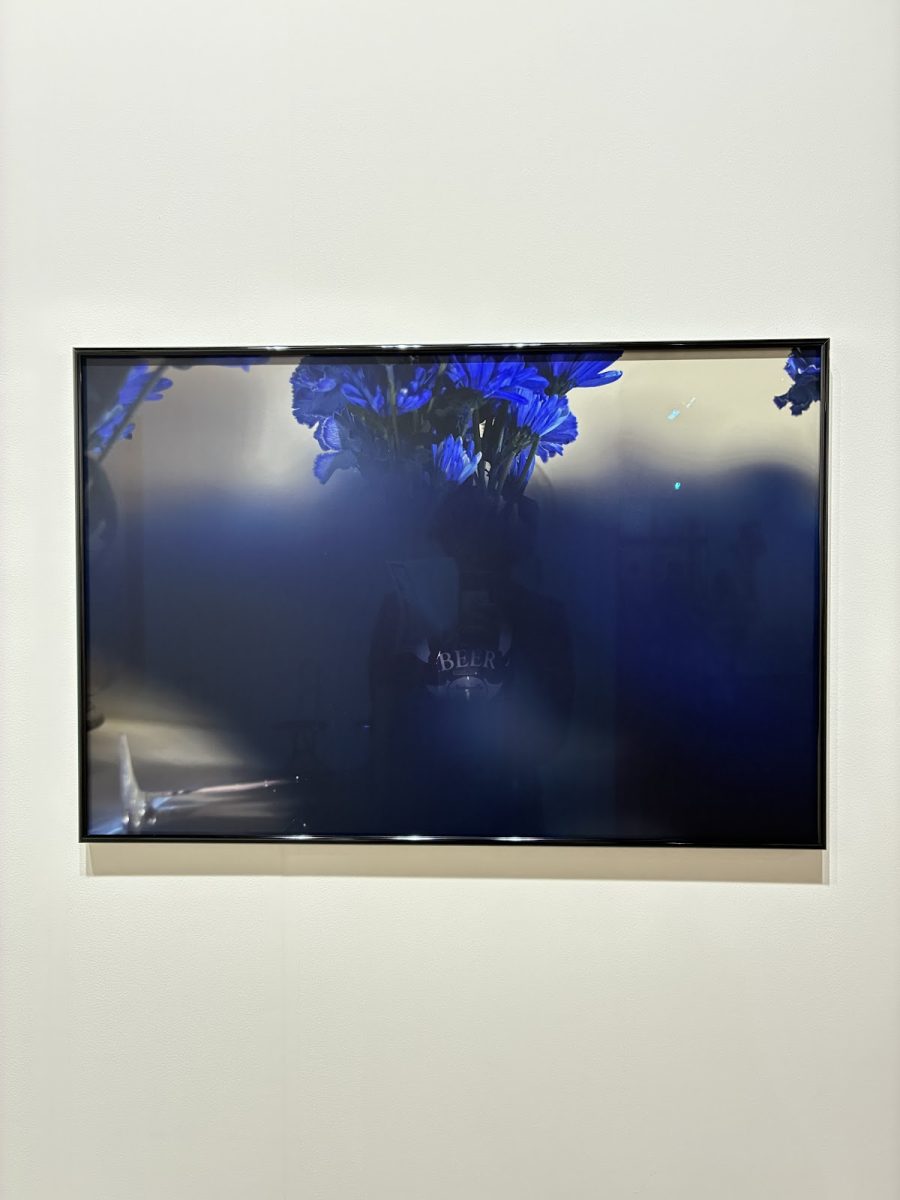
It’s hard not to be drawn into Megan Plunkett’s Still Blue (2024). The photo depicts the tippy tops of a bouquet blooming from a cloud of blue. In the centre of the image, we can discern a label: BEER. I was told that the flowers were dyed blue and that the image was taken following some sporting win. In this way (and perhaps this is an obvious reading), the work makes me think about the infusing nature of ideology — how we change to the conditions of our surroundings.
R10: Jocelyn Wolff
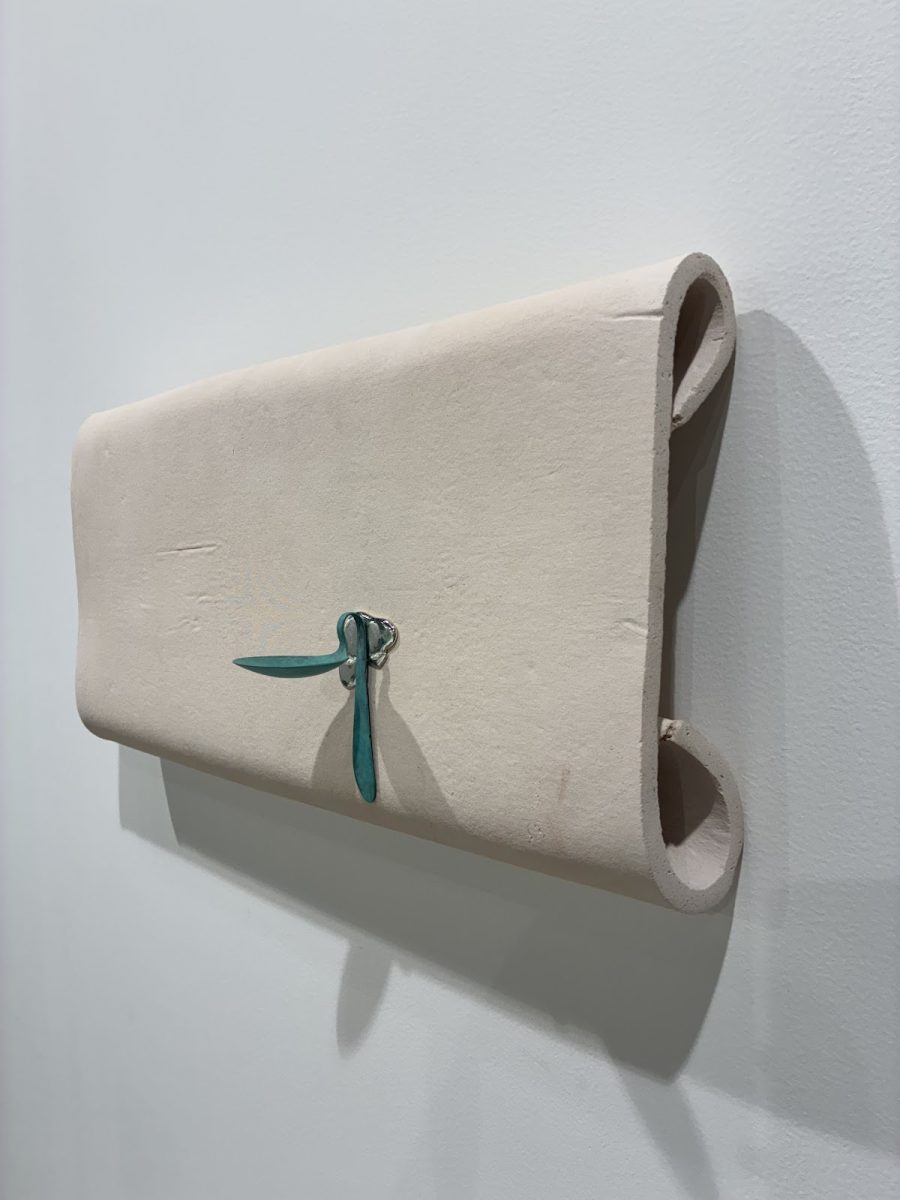
Another gallery not on the list, I was walking by and hit by Katinka Bock’s Fontaine Manifeste IV (2025). The sculpture reminds me of a cherub. I fell in love with Bock’s cheeky use of material as well as the campy form.
S12: Plan B

Marieta Chirulescu’s Untitled (2025) is a playful work. Composed from four puzzle-like pieces and three squiggly lines, the canvas print has a low fidelity. Toying with negative space, Chirulescu’s approach gives the artwork a sense of movement. Looking, it seems like each of her puzzle-piece forms is shimmying.
S14: Sylvia Kouvali
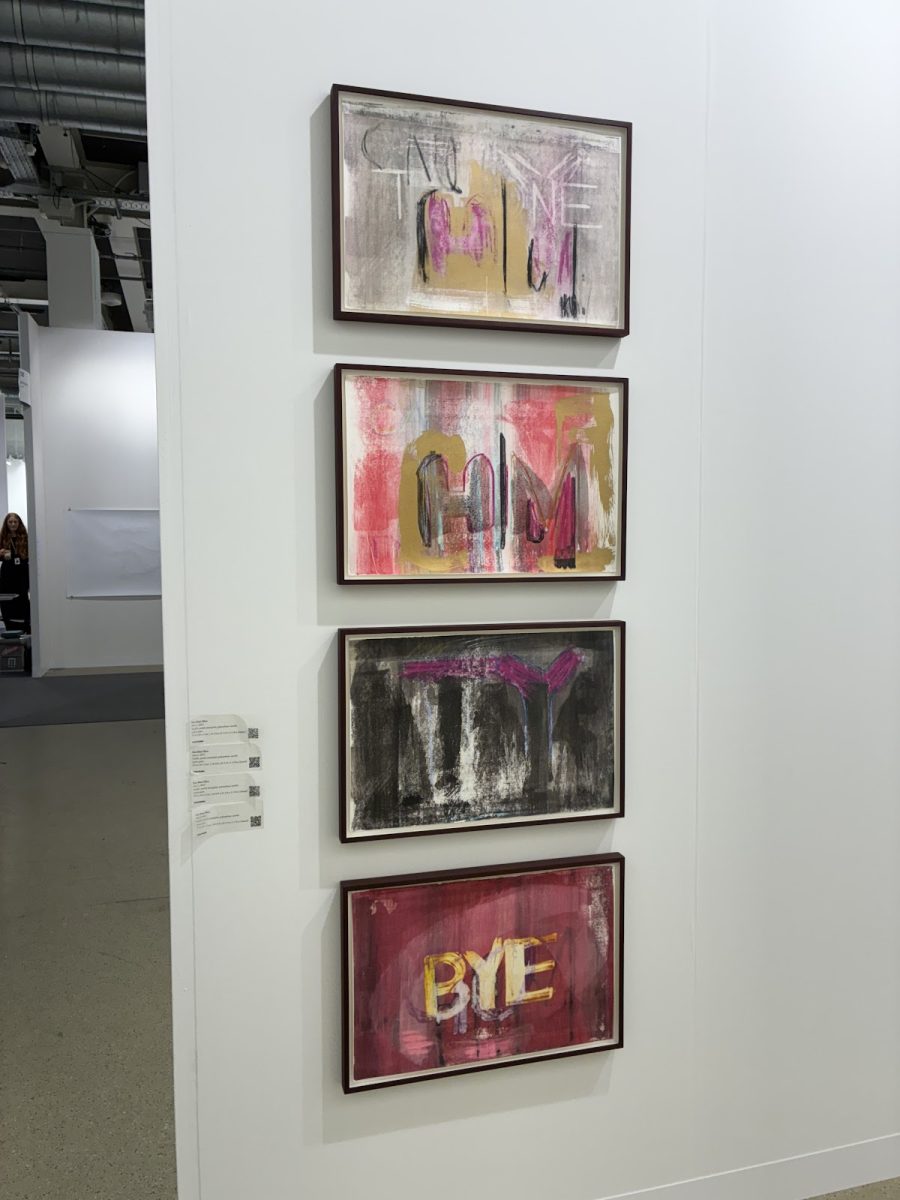
I have always been drawn to how Ima-Abasi Okon co-opts the formalities of language — the title of her current exhibition at the Van Abbemuseum in Eindhoven is indicative of this: “Incorporeal hereditaments like Love [can] Set(s) You Free, according to Kelly, Case, Dru Hill, Kandice, LovHer, Montel and Playa with 50 – 60g of -D,)e,l,a,y,e,d1; -O,)n,n,s,e,t2;- ;[heart];M,)u,s,c,l,e3;[heart];-S,)o,r,e,n,e,s,s4;”. Sylvia Kouvali is displaying a series of early paper-based works by Okon, literally titled Series 2 (2013). A cacophonous jam of paint, pencil, print and more, to me these four artworks speak with the same expressive quality as Okon’s more recent work, showing how expressions can exist over time, changing form to meet the demands of the time.
S9: Jan Mot
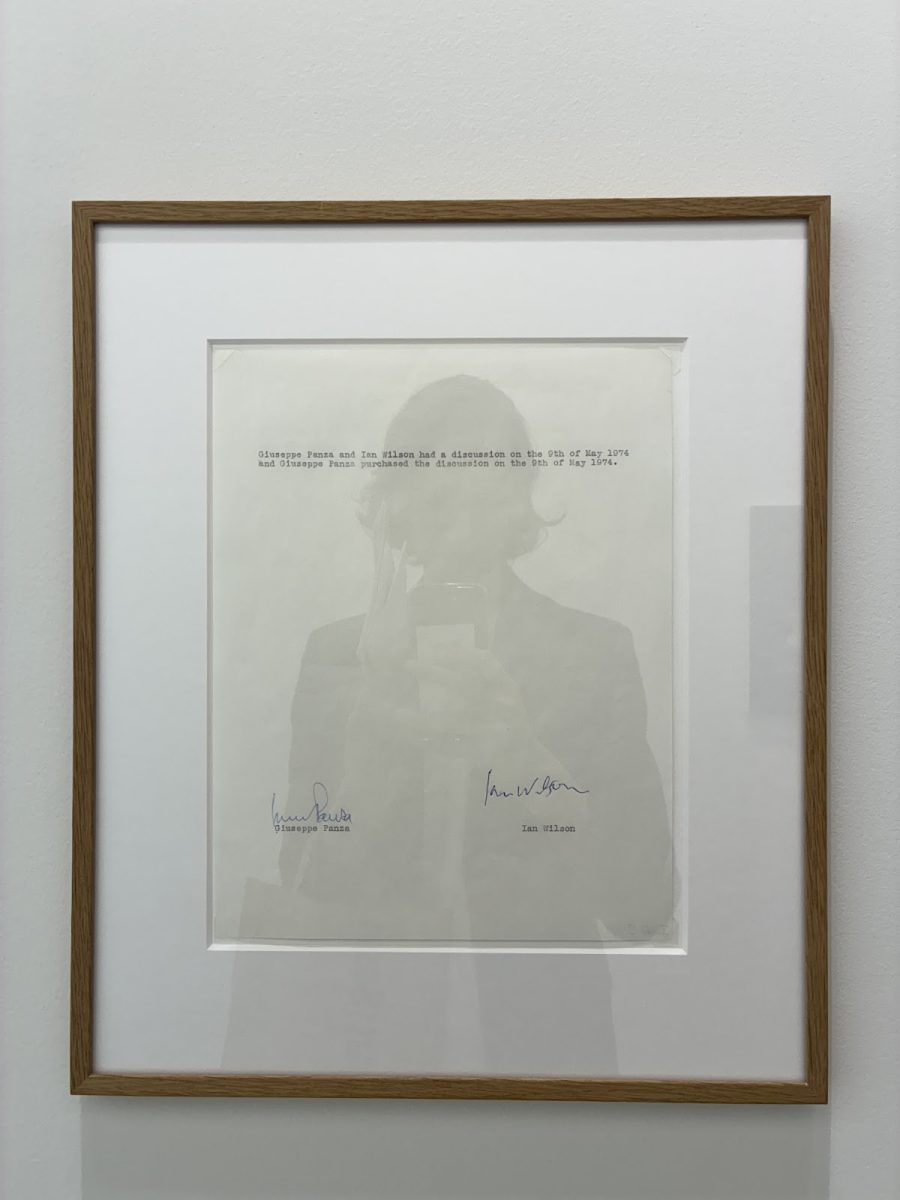
Jan Mot should win best booth at Basel. Featuring artworks by Stanley Brouwn, Lawrence Weiner and Ian Wilson (some others too), I could spend hours here contemplating the conceptuality being sold. Wilson’s Giuseppe Panza and Ian Wilson had a discussion on the 9th of May 1974 and Giuseppe Panza purchased the discussion on the 9th May 1974 (1974) is indicative of what I mean. The question here should not be “you sell a conversation!?” but rather “you can re-sell a conversation!!?”. Conceptualism demands such re-thinkings.
Now, I have to, HAVE TO, end with Félix (González-Torres). Not in the main fair but Unlimited, I had to trek across the Messeplatz to see this work (HAD TO).
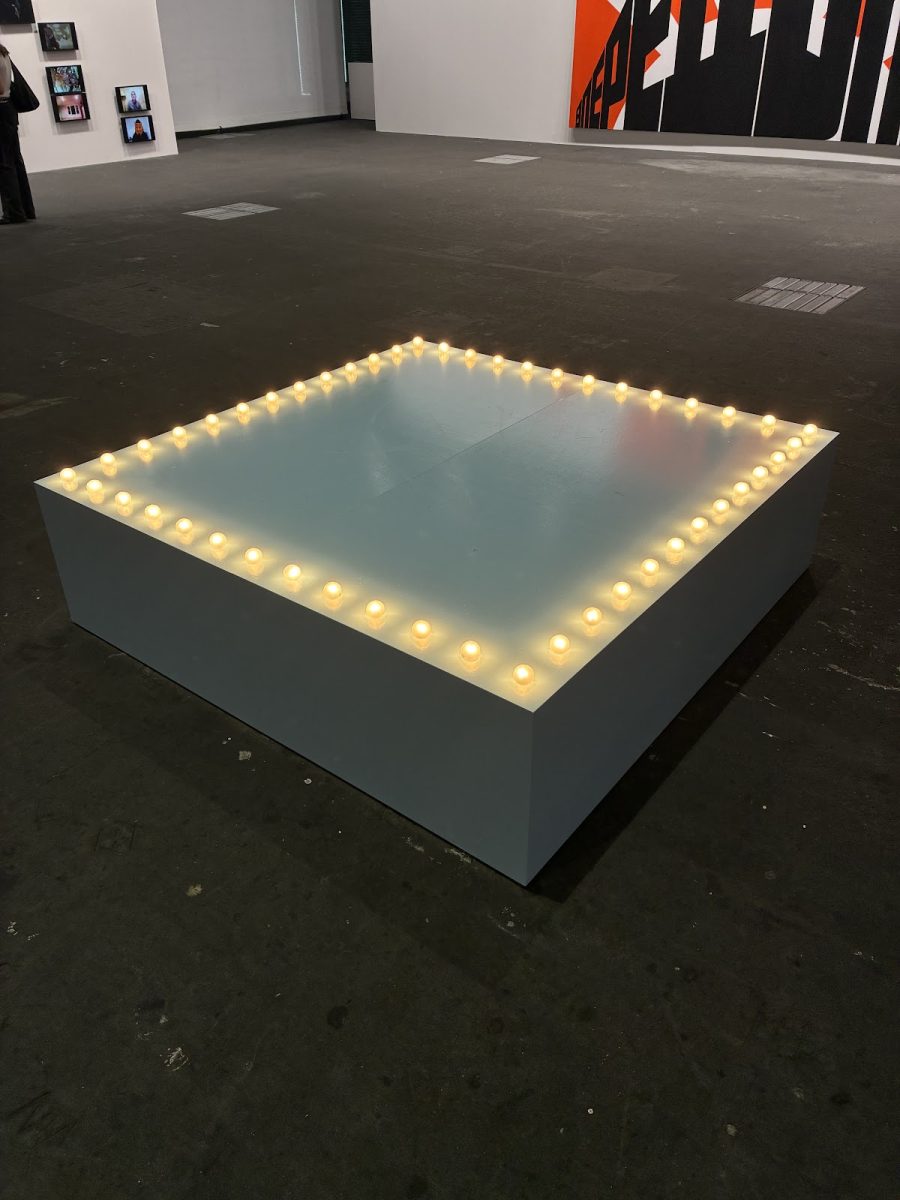
Magic.
Till next year Basel.
Art Basel | Basel 2025
June 19th—22nd, 2025
Messe Basel, Messeplatz 10, 4058 artbasel.com/basel
Categories
Tags
- 47 Canal
- Abbas Akhavan
- Abbas Zahedi
- Antenna Space
- Art Basel in Basel
- Art Basel in Basel 2025
- Brian Jungen
- Bruno Pacheco
- carlier gebauer
- Casey Kaplan
- Casey Kaplan Gallery
- Catriona Jefferies
- Félix González-Torres Foundation
- Herald St
- Hollybush Gardens
- Ian Waelder
- Ima-Abasi Okon
- Isabella Ducrot
- Jan Mot
- Jocelyn Wolff
- Joyce Joumaa
- Katinka Bock
- Lawrence Weiner
- Marieta Chirulescu
- Martin Janda
- Maureen Paley
- Megan Plunkett
- Pablo Bronstein
- Paul P
- Paul Thek
- Peng Zuqiang
- Plan B
- Proyectos Ultravioleta
- Standard
- STANDARD gallery
- Stanley Brouwn
- steve mcqueen
- Sweetwater
- Sylvia Kouvali
- Thomas Dane
- Wang Xu
